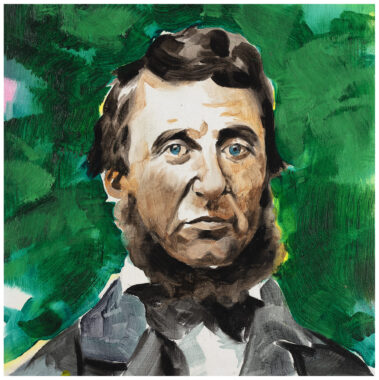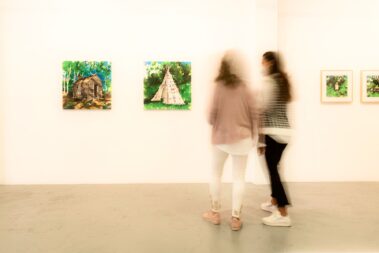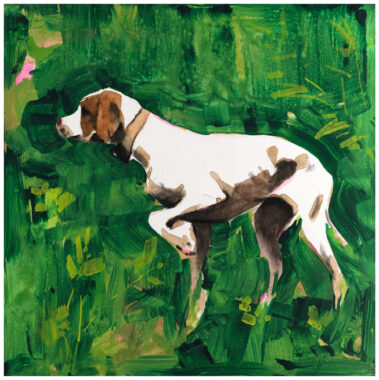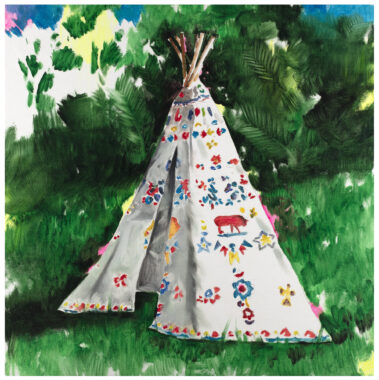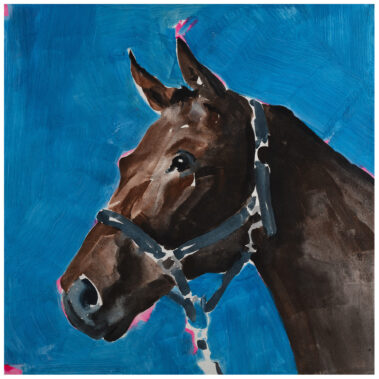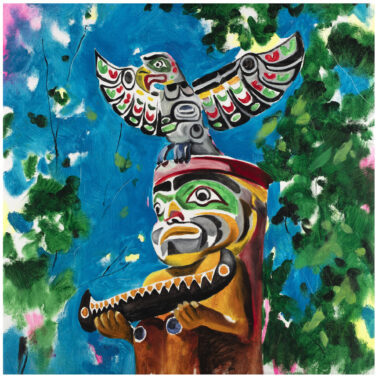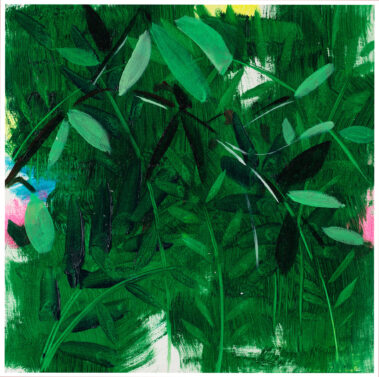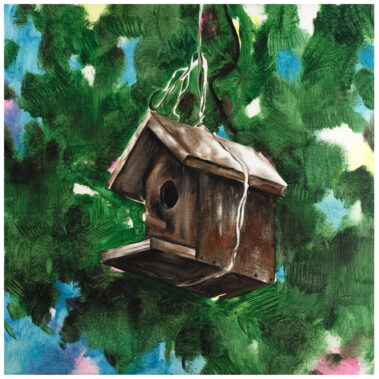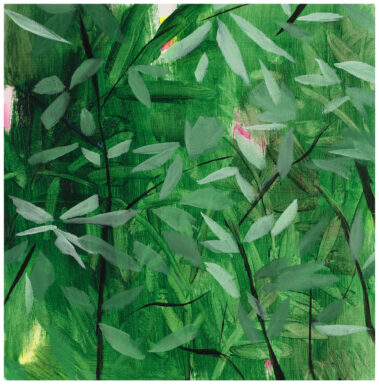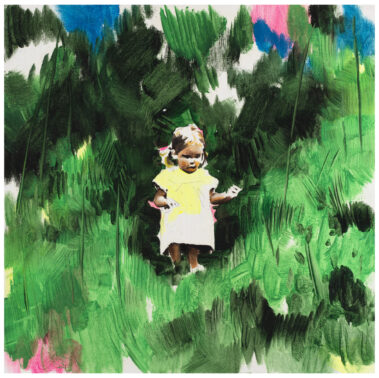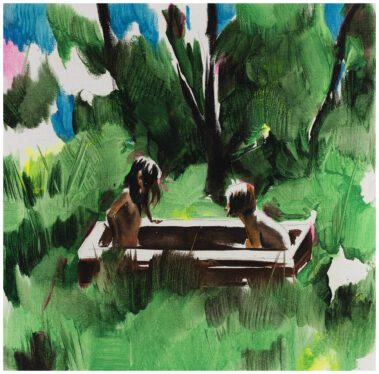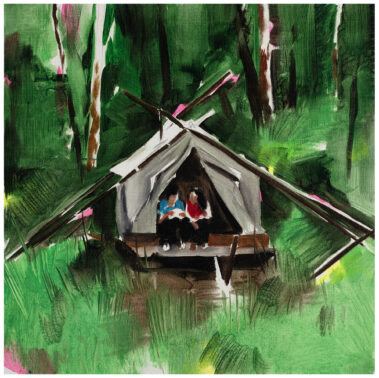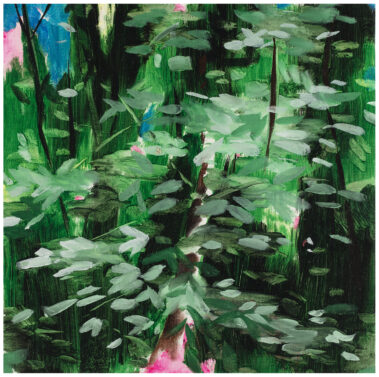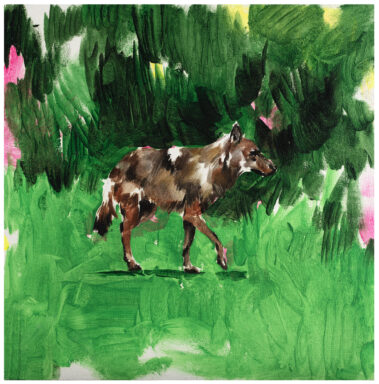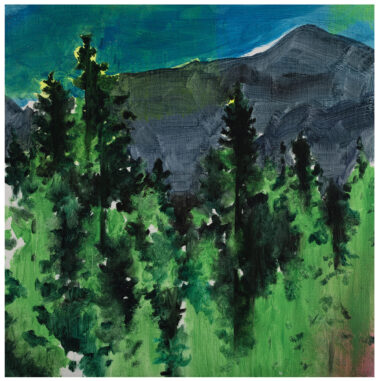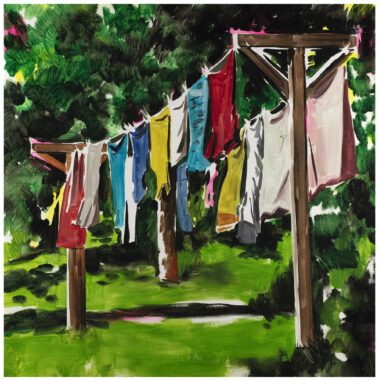Hermeneutics is the art of interpreting and, ultimately, translating. The word stems from messenger deity Hermes, considered to be the father of language. While it is true that there are many and varied hermeneutic philosophies, Gadamer achieves a somewhat systematic theory that, broadly speaking, sets a theory of truth where interpretation from subjective experiences leads to a translation that allows understanding.
A similar exercise motivates Green Is Green, by painter Félix Coll, who reports that Walden, the well-known book by Henry David Thoreau, fell into his hands in a perfect moment of his life. It was first a copy in Catalan, then in English and finally in Spanish what got him captivated in Thoreau’s ascetic experience. After some time and three languages, Coll started translating it into his own language: painting, thus becoming Thoreau’s Hermes.
“It is how I would like my life to be”, he says, and not only his life but also the city’s. That is why there is plenty of green, that color so absent in Palma’s parks and public places. That same colour which undoubtedly strikes our minds first when we read about the years that Thoreau spent in New England’s forests.
Therefore, this is an observation of things internal and external. A kind of phenomenology of a longing, a sigh or even a dream, if preferred. Hence the images, partly oneiric, always idyllic, of a safe environment, peaceful and natural which we lack but still wish.
Walden is the mirror reflecting Coll’s inside, as it is the result of Thoreau’s looking at himself. Landscapes and scenes are painted on a balance between what is owned and what is not, but especially between what is owned and what is not needed, what is spare and what is missing. Therefore, Green Is Green exudes vegetation, greenery and spiritual connection to nature: all lacking features.
And a look outside. Turning one’s gaze outwards from the hut’s window that is inherent to the painter. That inner shelter from which the sight projects through the brush to discover a near and possible future: children happily playing under their father’s gaze, or animals enjoying the use that humans give to what nature provides. A healthy return, a smart beneficent symbiosis like Thoreau’s during his contemplative staying in Walden.
Green Is Green is Thoreau and Walden’s invitation accepted by Coll, and now it is the painter who extends an invitation for us to rethink our lives and the tonality missing in them, and to discover that it is the green scheme. All executed through Felix’s canvas, Thoreau’s Hermes and his painting translation of Walden.
Adrián Malagamba

